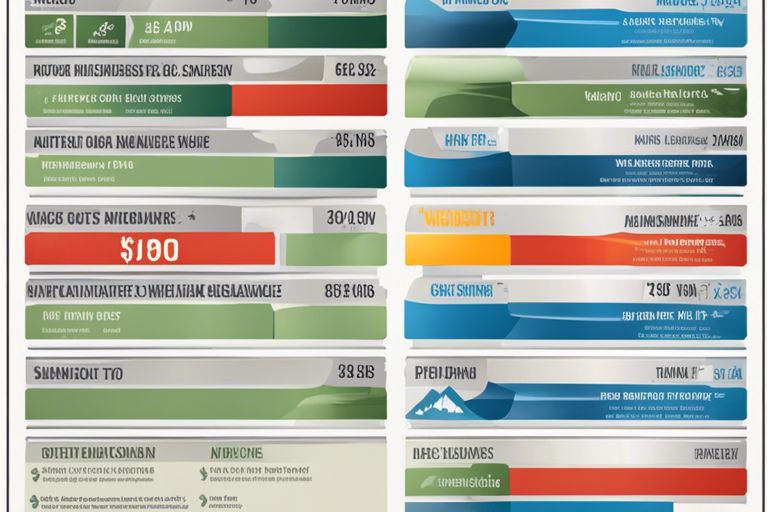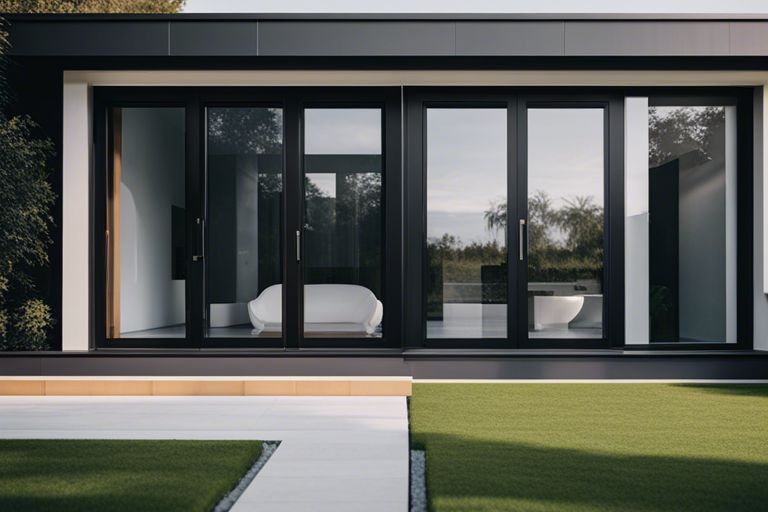When it comes to modern architecture, curtain walls play a vital role in both the aesthetic appeal and functionality of a building. These non-structural facades are made of lightweight material and can span multiple floors, offering flexibility in design and natural light penetration. However, improper design and installation can lead to energy inefficiency and water leakage, causing costly repairs and safety hazards. Understanding the creative and practical uses of curtain walls is essential for architects and designers to maximise their benefits while mitigating risks. This blog post will explore the various ways in which curtain walls can be utilised effectively in modern construction projects.
Key Takeaways:
- Enhances architectural aesthetics: Curtain walls offer creative design possibilities and can enhance the overall appearance of a building, creating a modern and sleek exterior.
- Allows for natural lighting: Curtain walls are made of glass, allowing natural light to enter the building’s interior, reducing the need for artificial lighting and creating a more sustainable environment.
- Provides thermal efficiency: Modern curtain walls incorporate thermal break technology, improving energy efficiency by preventing heat loss and reducing heating and cooling costs.
Fundamentals of Curtain Wall Design
Designing a curtain wall requires a deep understanding of its fundamentals to create a structure that is not only visually appealing but also functional and durable. The use of curtain walls in modern architecture has revolutionised the way buildings are designed, offering a versatile alternative to traditional construction methods.
Materials and Components
When designing a curtain wall, the choice of materials and components is crucial to the overall performance of the structure. Glass, aluminium, steel, and stone are common materials used in curtain wall systems. Each material offers unique aesthetic and functional properties, allowing architects to tailor the design to meet specific requirements. Components such as mullions, transoms, and anchors play a critical role in supporting the curtain wall system and must be carefully selected to ensure structural integrity and weather resistance.
Structural Considerations
Structural considerations are paramount in the design of curtain walls to ensure the safety and stability of the building. Factors such as wind loads, seismic activity, and building movement must be taken into account during the design process. The structural engineer plays a key role in determining the appropriate frame and connection design to withstand the forces acting on the curtain wall. Proper anchorage to the building structure is essential to prevent deflection and deformation under various loads.
Additionally, the thermal performance of the curtain wall system is a crucial aspect that influences the energy efficiency of the building. Insulating materials and double-glazed units help minimise heat loss and improve comfort levelsCollaboration between architects, engineers, and manufacturers is essential to integrate structural and thermal considerations seamlessly into the design process, ensuring a successful outcome.

Creative Applications of Curtain Walls
Aesthetic Enhancements
Curtain walls offer a multitude of opportunities for creative expression in architectural design. By utilising different materials, colours, and textures, architects can achieve stunning visual effects that enhance the overall aesthetics of a building. The transparent nature of curtain walls allows for an abundance of natural light, creating an open and airy feel within the space. Additionally, the ability to customise the size and shape of the panels provides endless possibilities for unique and eye-catching designs that can make a bold statement.
Furthermore, integrating artistic elements such as glass patterns, digital printing, or even incorporating plant life within the curtain wall system can add a touch of elegance and sophistication to the facade. These artistic enhancements not only elevate the visual appeal of a building but also contribute to its character, setting it apart as a distinctive and memorable structure.
Energy Efficiency and Sustainability
Curtain walls play a crucial role in enhancing a building’s energy efficiency and sustainability. The use of high-performance materials and advanced glazing technologies helps to minimise heat loss in winter and reduce heat gain in summer, thus lowering the overall energy consumption for heating, cooling, and lighting. By incorporating features such as thermal breaks, low-emissivity coatings, and insulated glass units, curtain walls contribute to the thermal performance of a building, creating a more comfortable indoor environment while reducing its carbon footprint.
Moreover, the installation of energy-efficient curtain walls can also contribute to LEED certification and other green building standards, showcasing a commitment to sustainability and environmental responsibility. The long-term benefits of improved energy efficiency not only result in cost savings for building owners but also promote a healthier and more environmentally conscious built environment for future generations.
For more information on the energy efficiency and sustainability benefits of curtain walls, consult with a skilled architect or building professional to explore the latest innovations and best practices in green building design.

Practical Considerations in Curtain Wall Design
Safety and Building Codes
When designing with curtain walls, one of the most critical considerations is safety and adherence to building codes. Curtain walls must meet stringent safety requirements to ensure the structural integrity of the building and the safety of its occupants. Building codes dictate factors such as wind load resistance, fire safety measures, and impact resistance, all of which must be carefully considered during the design phase.
Architects and engineers must work closely together to ensure that the curtain wall design complies with all relevant building codes and standards. Failure to meet these requirements can result in serious consequences, including structural failure, safety hazards, and legal issues.
Maintenance and Longevity
Another crucial aspect of curtain wall design is maintenance and longevity. It is essential to consider the long-term upkeep of the curtain wall system to ensure its durability and aesthetic appeal. Regular maintenance, such as cleaning and inspections, is necessary to prevent deterioration and potential issues.
Properly designed curtain walls can have a long lifespan when well-maintained. Choosing high-quality materials and finishes can also contribute to the longevity of the system, reducing the need for frequent repairs and replacements.
It is recommended to establish a regular maintenance schedule for curtain walls to detect any issues early on and address them promptly. By investing in proper maintenance, building owners can extend the lifespan of their curtain walls and minimise the risk of costly damage in the future.

Innovative Trends in Curtain Wall Technology
Smart Glass and Dynamic Systems
Curtain wall technology has evolved significantly with the introduction of smart glass and dynamic systems. These innovative solutions allow for greater control over the building’s façade, providing benefits such as improved energy efficiency and enhanced occupant comfort. Smart glass can adjust its tint or transparency in response to external conditions, reducing the need for artificial lighting and heating, thus lowering utility costs.
Dynamic systems in curtain walls can also adapt to changing environmental factors, offering increased thermal insulation and soundproofing capabilities. The integration of these technologies not only enhances the aesthetic appeal of the building but also contributes to its overall sustainability by promoting a more efficient use of resources.
Integration with Building Management
Another key trend in curtain wall technology is its integration with building management systems. By connecting the curtain wall to the building’s centralised control system, it becomes possible to monitor and adjust various parameters such as lighting, temperature, and security settings in real-time. This seamless integration allows for a more holistic approach to building operation and maintenance, leading to improved efficiency and occupant satisfaction.
Furthermore, the integration of curtain walls with building management systems enables remote access and automated controls, making it easier for facility managers to oversee and optimise the building’s performance. This level of connectivity not only streamlines operations but also enhances the overall user experience within the built environment.
Conclusion: Designing with Curtain Walls – Creative and Practical Uses
Lastly, designing with curtain walls offers a plethora of creative and practical uses in modern architecture. These versatile structures not only provide aesthetically pleasing design features but also offer functional benefits such as thermal efficiency, natural lighting, and sound insulation. Architects and designers can harness the flexibility of curtain walls to create captivating facades, unique building shapes, and sustainable environments. By incorporating curtain walls into their projects, professionals can push the boundaries of design innovation while meeting the demands of energy efficiency and sustainability. In essence, curtain walls are not just architectural elements; they are key tools in creating visually striking and environmentally conscious buildings.
FAQ
Q: What are some creative uses of designing with curtain walls?
A: Creative uses of designing with curtain walls include creating visually striking facades, allowing for natural light to penetrate deep into buildings, and enabling innovative building shapes.
Q: How can curtain walls be used practically in building design?
A: Curtain walls can be used practically in building design by providing thermal insulation, improving energy efficiency, and enhancing acoustical performance.
Q: What are some important considerations when designing with curtain walls?
A: Some important considerations when designing with curtain walls include structural integrity, weather resistance, maintenance requirements, and compatibility with other building systems.






